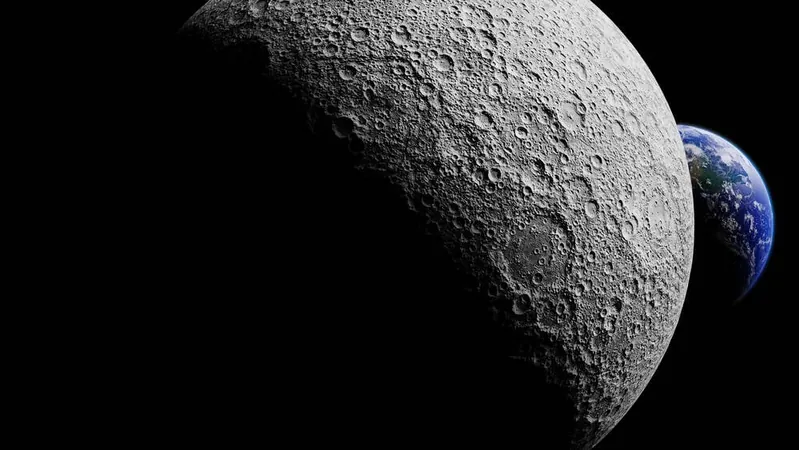
Revolutionary Breakthrough! German Scientists Transform Moon Dirt into Solar Panel Glass for Lunar Sustainability
2025-04-08
Author: John Tan
Introduction
In an exciting development for future lunar exploration, a team of German scientists has discovered a groundbreaking method to utilize Moon dirt, or lunar regolith, for producing solar panel glass. This innovation not only opens the door to sustainable energy production on the Moon but also significantly reduces the logistical challenges of transporting solar panels from Earth.
Research Findings
Under the leadership of Dr. Felix Lang from the University of Potsdam, the researchers published their findings last week, highlighting that their method could decrease the need for materials transported from Earth by up to 99%. This is crucial considering that future lunar settlers will require abundant solar power to sustain their habitats and operations.
The researchers conducted experiments by heating a lunar regolith simulant to an astonishing 1,550°C in a vacuum-sealed resistance furnace. This process yielded a semi-transparent glass-like material from Moon dust, which they successfully combined with halide perovskite to create efficient solar cells. Dr. Lang stated, “The standout feature of our study is that we can directly extract the glass needed for our solar cells from lunar regolith without extensive processing.” This technique also proves to be scalable, making it feasible to produce solar cells with minimal equipment and energy input on the Moon itself.
Material Insights
Importantly, the Moon's highland regolith—rich in anorthosite and low in iron oxide—was identified as the best material for producing clearer glass. In contrast, regolith from the iron-heavy lowland regions tends to darken the glass, limiting its transparency and efficiency. The researchers aim to set up similar processes using a solar furnace on the Moon, harnessing lunar sunlight to reach the required temperatures for melting.
Efficiency Challenges
While the initial power conversion efficiency (PCE) of the solar cells achieved was 8.5%—lower than commercially available panels—the team notes that adjusting the glass thickness significantly impacted efficiency. A thinner layer of 0.1mm achieved a simulated PCE of 21.5% in laboratory conditions. Despite this promising data, the challenge remains to increase efficiency for real-world applications on the Moon.
Radiation Resilience
Addressing concerns about radiation degradation—a common issue in solar cells exposed to extreme space conditions—Lang’s team found that their moonglass exhibited strong resilience against radiation damage. Combining this with the known durability of perovskite solar cells could lead to longer-lasting lunar power solutions. However, they acknowledged that further research is necessary to fully understand the longevity of perovskites under continuous Moon illumination and extreme temperature fluctuations.
Future Prospects
Dr. Lang expressed optimism about the future, suggesting that their findings could pave the way for advanced solar cells on the Moon, remarking, “We have a promising path to develop moonsolar cells based on halide perovskites.


 Brasil (PT)
Brasil (PT)
 Canada (EN)
Canada (EN)
 Chile (ES)
Chile (ES)
 Česko (CS)
Česko (CS)
 대한민국 (KO)
대한민국 (KO)
 España (ES)
España (ES)
 France (FR)
France (FR)
 Hong Kong (EN)
Hong Kong (EN)
 Italia (IT)
Italia (IT)
 日本 (JA)
日本 (JA)
 Magyarország (HU)
Magyarország (HU)
 Norge (NO)
Norge (NO)
 Polska (PL)
Polska (PL)
 Schweiz (DE)
Schweiz (DE)
 Singapore (EN)
Singapore (EN)
 Sverige (SV)
Sverige (SV)
 Suomi (FI)
Suomi (FI)
 Türkiye (TR)
Türkiye (TR)
 الإمارات العربية المتحدة (AR)
الإمارات العربية المتحدة (AR)